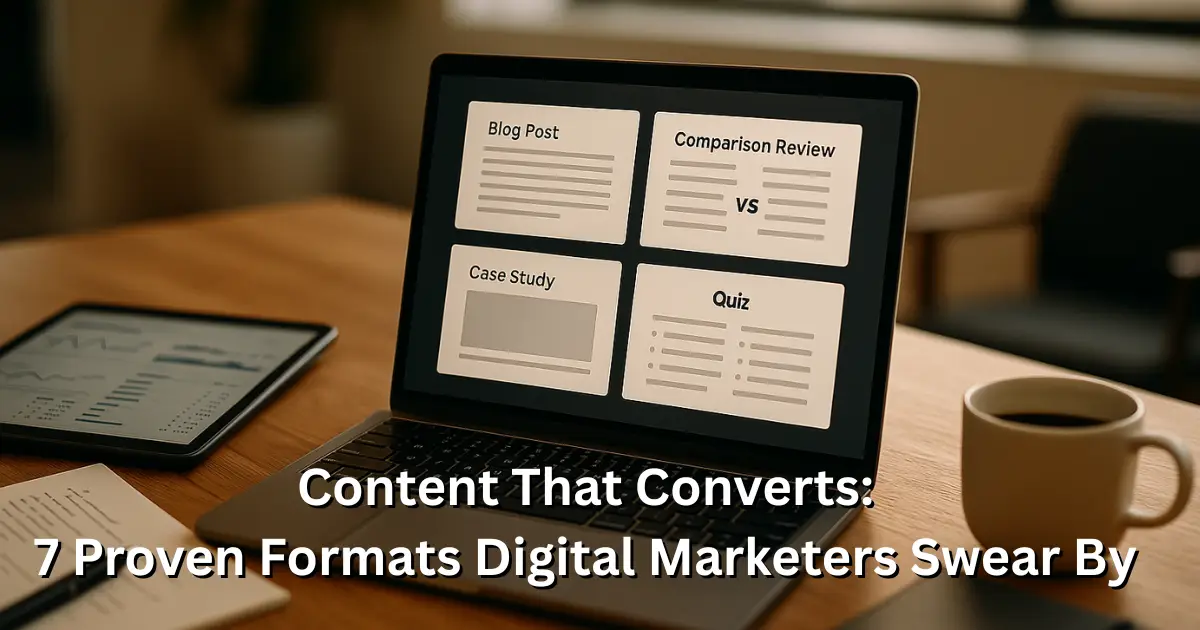From Clicks to Cash: How to Turn a $10/day Ad Budget into Recurring Affiliate Revenue
What if I told you that some of today’s most successful affiliate marketers started with nothing more than a $10 daily ad spend and a smartphone? While the affiliate marketing industry has exploded to $37.3 billion in 2025, the barrier to entry remains surprisingly low—and the potential for recurring revenue has never been higher.
In an era where businesses see an average 12:1 return on affiliate marketing investments, the question isn’t whether small-budget affiliate marketing works—it’s how quickly you can scale from your first $10 daily ad spend to consistent four-figure monthly commissions.
The Small Budget Revolution in Affiliate Marketing
The landscape of affiliate marketing has fundamentally shifted. 81% of advertisers now use affiliate marketing, and the industry shows no signs of slowing down. But here’s what most aspiring affiliate marketers miss: success isn’t about having the biggest budget—it’s about maximizing efficiency.
Recent academic research from leading business institutions confirms this trend. A comprehensive study on digital marketing strategies for small and medium-sized enterprises found that businesses optimizing digital ads can see revenue grow by up to 20% in the first year, with small businesses spending an average of just $534 per month on digital advertising—that’s roughly $17 per day.
The Current Market Reality
The affiliate marketing industry has grown $17 billion in just four years, jumping from $20.3 billion in 2021 to $37.3 billion in 2025. This explosive growth creates unprecedented opportunities for newcomers willing to start smart rather than start big.
Key Market Indicators:
- 16% of online orders in the United States come through affiliate marketing
- The average affiliate marketer earns $8,038 per month
- Up to 100× income gap between beginners and experts
The $10/Day Strategy Framework
Phase 1: Foundation Building (Days 1-30)
Budget Allocation:
- $7/day: Paid traffic (Facebook/Google Ads)
- $2/day: Content creation tools and analytics
- $1/day: Testing and optimization
Start by selecting one high-converting affiliate program in a profitable niche. News niches had the greatest monthly income with an average adjusted monthly revenue of $8,439, while finance typically offers commission rates of 35-40%.
Phase 2: Traffic Optimization (Days 31-60)
Focus on micro-targeting to maximize your limited budget. Research from Harvard Business School’s digital marketing programs emphasizes that targeted campaigns using Facebook and Instagram are rated as the most effective channels by 63% of small businesses.
Traffic Sources to Prioritize:
- Mobile-First Approach: Over half of all affiliate referral traffic comes from mobile devices
- Social Media Focus: Leverage platforms where your audience naturally congregates
- Content Marketing: Build authority while driving organic traffic alongside paid efforts
Phase 3: Conversion Maximization (Days 61-90)
This is where the magic happens. By month three, successful affiliates typically see their conversion rates improve dramatically as they optimize their funnels based on real data.
The Pros: Why $10/Day Can Transform Your Income
Massive ROI Potential
The numbers speak for themselves. Affiliate marketing brings a 12:1 return on ad spend (ROAS) on average, meaning your $10 daily investment could realistically generate $120 in daily commissions once optimized. Scale that monthly, and you’re looking at $3,600 in gross commissions.
Low Barrier to Entry
Unlike traditional businesses requiring substantial upfront investment, affiliate marketing with a $10/day budget puts entrepreneurship within reach of virtually anyone. Academic research confirms that small and medium-sized enterprises utilizing strategic digital marketing approaches see significant performance improvements, particularly when implementing cost-effective digital strategies.
Scalability Without Proportional Risk
Once you identify winning campaigns, scaling becomes a mathematical exercise. Increase budget gradually while maintaining the same cost-per-acquisition ratios. 31% of web publishers rely on affiliate marketing as their main source of income, proving the long-term viability of this approach.
Diverse Revenue Streams
With 94% of publications utilizing multiple affiliate marketing programs, diversification becomes natural. Your $10/day can be split across multiple offers, reducing risk while increasing potential upside.
Performance-Based Model
You only pay for results. Unlike traditional advertising where you pay for impressions or clicks that may not convert, affiliate marketing rewards performance. This aligns perfectly with small budget constraints.
Global Market Access
Affiliate marketing spending in the U.S. is expected to reach $16 billion by 2028, but the global market offers even greater opportunities. Your $10/day can reach international audiences, exponentially expanding your potential customer base.
Technology Advantages
Today’s affiliate marketers have access to sophisticated tracking, analytics, and automation tools that were previously available only to large corporations. MIT Sloan research demonstrates that companies leveraging analytics for strategic innovation consistently outperform competitors, and these same principles apply to individual affiliate marketers.
The Cons: Realistic Challenges to Navigate
Initial Learning Curve
The first 30-60 days often involve more learning than earning. While not necessarily a significant drawback, new affiliates should expect to invest time understanding platform algorithms, audience behavior, and conversion optimization.
Market Saturation in Popular Niches
The primary challenge for 45.3% of affiliate marketers is getting traffic to their sites. Popular niches like weight loss and making money online are increasingly competitive, requiring more creative approaches to stand out.
Budget Limitations on Testing
With only $10/day, extensive A/B testing becomes challenging. You’ll need to be strategic about what you test and when, potentially slowing the optimization process compared to larger budget campaigns.
Platform Dependency Risks
Small budget campaigns are particularly vulnerable to platform policy changes. Algorithm updates on Facebook or Google can significantly impact traffic overnight, making diversification essential but challenging with limited resources.
Cashflow Timing
Most affiliate programs pay 30-60 days after commissions are earned. This delayed payment structure means you’ll be investing for 2-3 months before seeing returns, requiring careful budget planning.
Advanced Strategies for Maximum Impact
Leverage AI and Automation
Marketers using video content, often enhanced by AI editing or scripting tools, report 49% higher conversion rates. Even with a small budget, AI tools can help you create professional content that competes with bigger players.
Focus on Customer Lifetime Value
Instead of pursuing one-time sales, target products with recurring commissions or high customer lifetime value. Harvard Business School research on digital marketing strategy emphasizes the importance of customer retention and lifetime value calculations in sustainable marketing approaches.
Community Building
$1.3 billion in creator-driven affiliate revenue by 2025 highlights the power of community-driven marketing. Build engaged micro-communities around your niche rather than pursuing broad, unfocused audiences.
The Path to Recurring Revenue
The transition from sporadic commissions to predictable recurring revenue happens when you shift from campaign-based thinking to system-based thinking. Successful affiliates create multiple touchpoints with their audience, building trust and authority that generates consistent conversions.
Key Milestones:
- Month 1: Break-even on ad spend
- Month 3: 2x return on investment
- Month 6: Diversified income streams generating $3,000+/month
- Month 12: Scaled to $10,000+/month with systematized processes
Future-Proofing Your Affiliate Business
Influencer marketing is projected to reach $32.55 billion in global market size in 2025, indicating continued growth in personal brand-driven affiliate marketing. Position yourself not just as an affiliate, but as a trusted authority in your niche.
The integration of AI, improved analytics, and emerging platforms will continue to level the playing field between small and large affiliates. Those who start now with disciplined, data-driven approaches will be best positioned to capitalize on these technological advances.
Your Next Steps
The affiliate marketing industry’s growth trajectory, combined with decreasing barriers to entry and increasing ROI potential, creates an unprecedented opportunity for those willing to start with disciplined, strategic approaches.
Start Today:
- Choose one profitable affiliate program in a niche you understand
- Set up tracking and analytics systems
- Launch your first $10/day campaign
- Document everything and optimize based on data
- Scale gradually while maintaining profitability ratios
The difference between those who succeed and those who fail in affiliate marketing isn’t the size of their starting budget—it’s the consistency of their approach and their willingness to treat it like a real business from day one.
With the affiliate marketing industry expected to continue growing at 10% annually, the question isn’t whether there’s opportunity—it’s whether you’re ready to seize it. Your $10/day investment could be the foundation of your financial freedom, but only if you start now and stay consistent.
The clock is ticking. The industry is growing. The opportunity is real. The only question left is: What are you waiting for?




